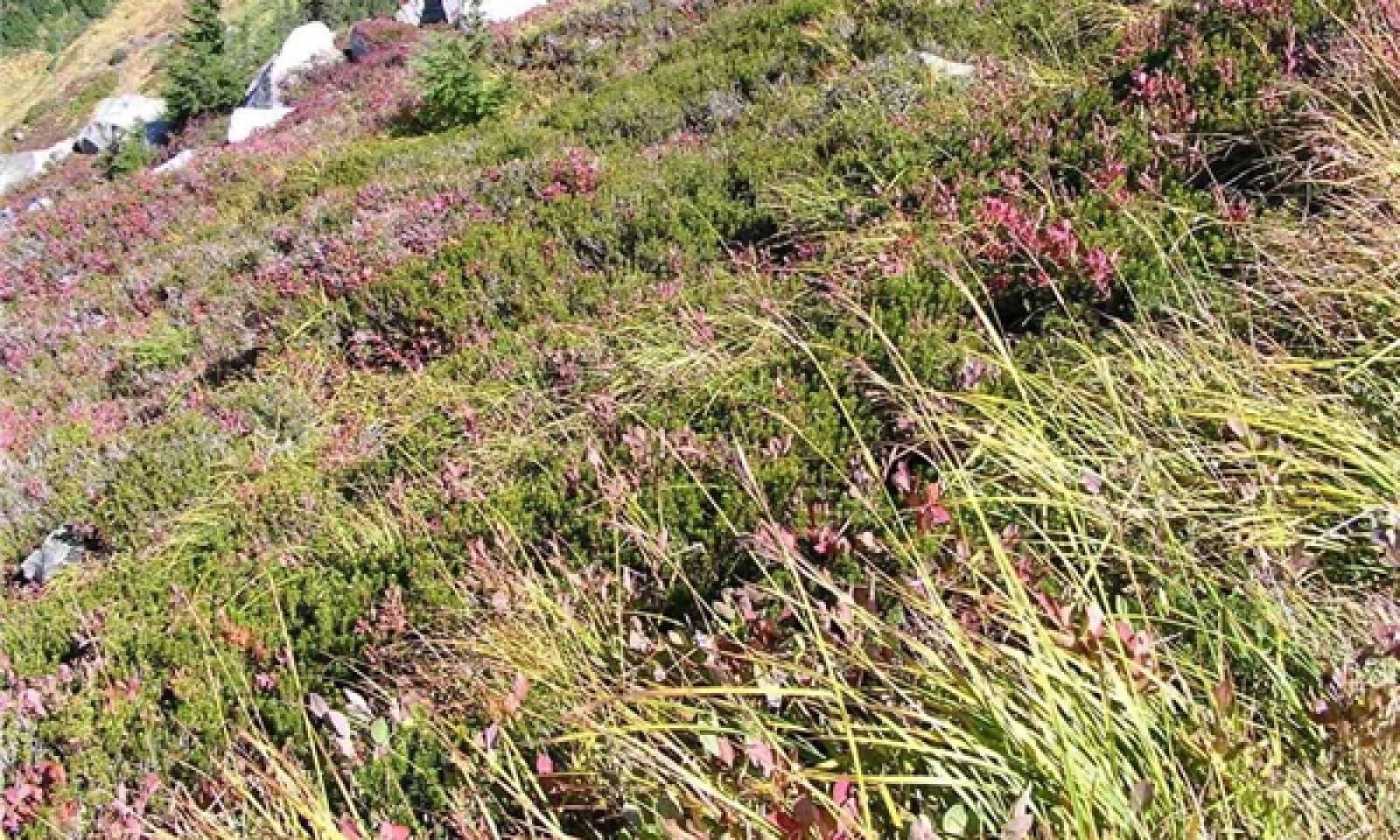
Subalpine Parkland - Minor Natural Soil Disturbance
Circle-spoke model
Scenario model
Current ecosystem state
Select a state
Management practices/drivers
Select a transition or restoration pathway
-
No transition or restoration pathway between the selected states has been described
Target ecosystem state
Select a state
Description
White mountainheather (Cassiope mertensiana) - pink mountainheather (Phyllodoce empetriformis) heather communities are widespread in alpine and upper subalpine environments, and may extend into the lower subalpine but the habitat changes with elevation. At higher elevations in the alpine zone, the communities occupy relatively early-snowmelt sites and are slightly snow-avoiding. At lower elevations in the upper subalpine zone, the communities occupy sites where snow melts relatively late and they are moderately snow-avoiding. In the lower subalpine and in avalanche tracks extending into the forested zones, heather communities occur on benches and basins where snow melts late and growing conditions resemble those at higher elevations. Pink mountainheather - Cascade huckleberry (Vaccinium deliciosum) communities may also include dwarfed mountain hemlock (Tsuga mertensiana), prostrate Alaska cedar (Callitropsis nootkatensis), and scattered black huckleberry (Vaccinium membranaceum), especially in transitions to krummholz or tree islands. On late snow melt, wetter, peaty substrates, partridgefoot (Luetkea pectinata) and showy sedge (Carex spectabilis) are common associates.
Submodel
Model keys
Briefcase
Add ecological sites and Major Land Resource Areas to your briefcase by clicking on the briefcase (![]() ) icon wherever it occurs. Drag and drop items to reorder. Cookies are used to store briefcase items between browsing sessions. Because of this, the number of items that can be added to your briefcase is limited, and briefcase items added on one device and browser cannot be accessed from another device or browser. Users who do not wish to place cookies on their devices should not use the briefcase tool. Briefcase cookies serve no other purpose than described here and are deleted whenever browsing history is cleared.
) icon wherever it occurs. Drag and drop items to reorder. Cookies are used to store briefcase items between browsing sessions. Because of this, the number of items that can be added to your briefcase is limited, and briefcase items added on one device and browser cannot be accessed from another device or browser. Users who do not wish to place cookies on their devices should not use the briefcase tool. Briefcase cookies serve no other purpose than described here and are deleted whenever browsing history is cleared.
Ecological sites
Major Land Resource Areas
The Ecosystem Dynamics Interpretive Tool is an information system framework developed by the USDA-ARS Jornada Experimental Range, USDA Natural Resources Conservation Service, and New Mexico State University.



